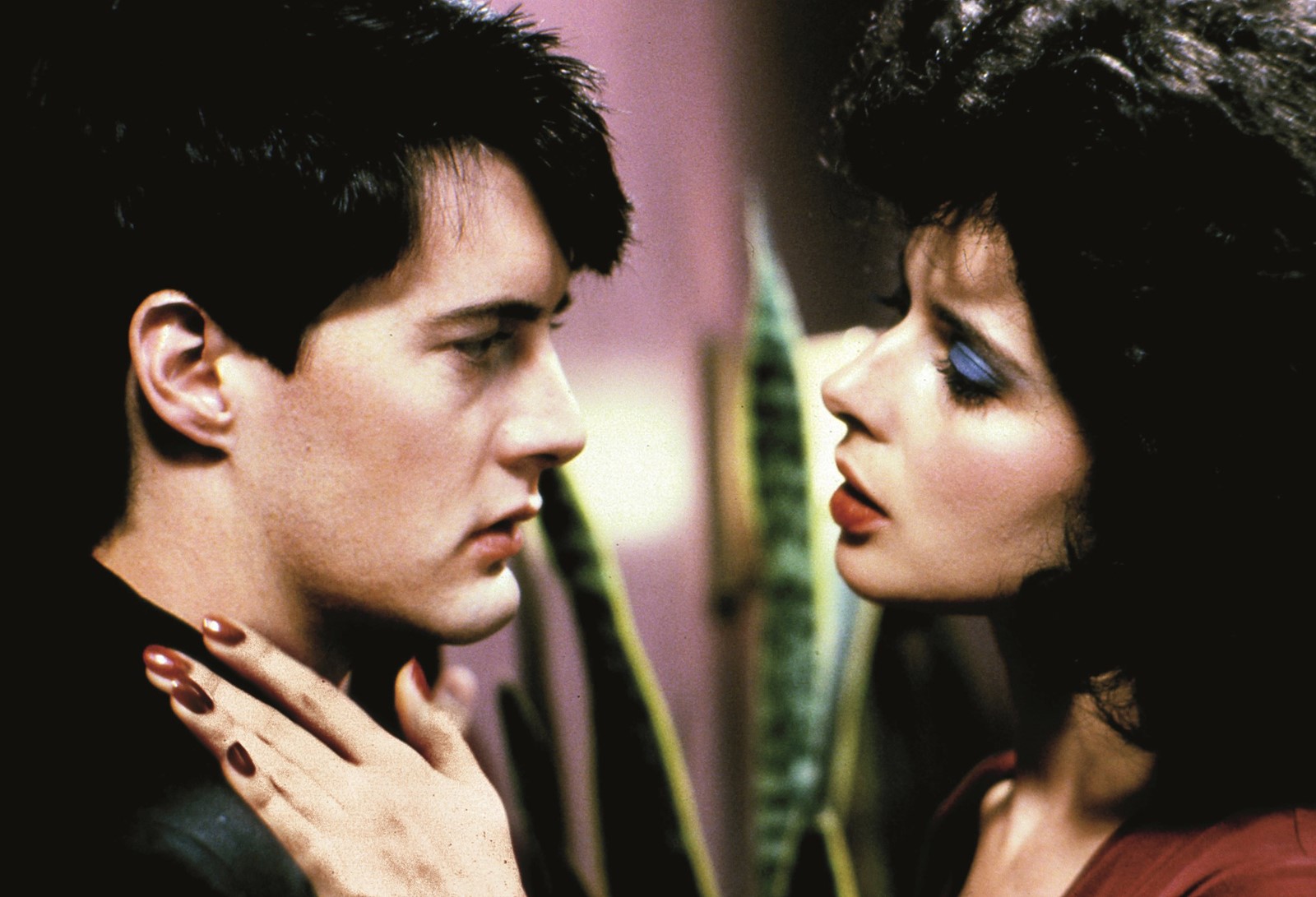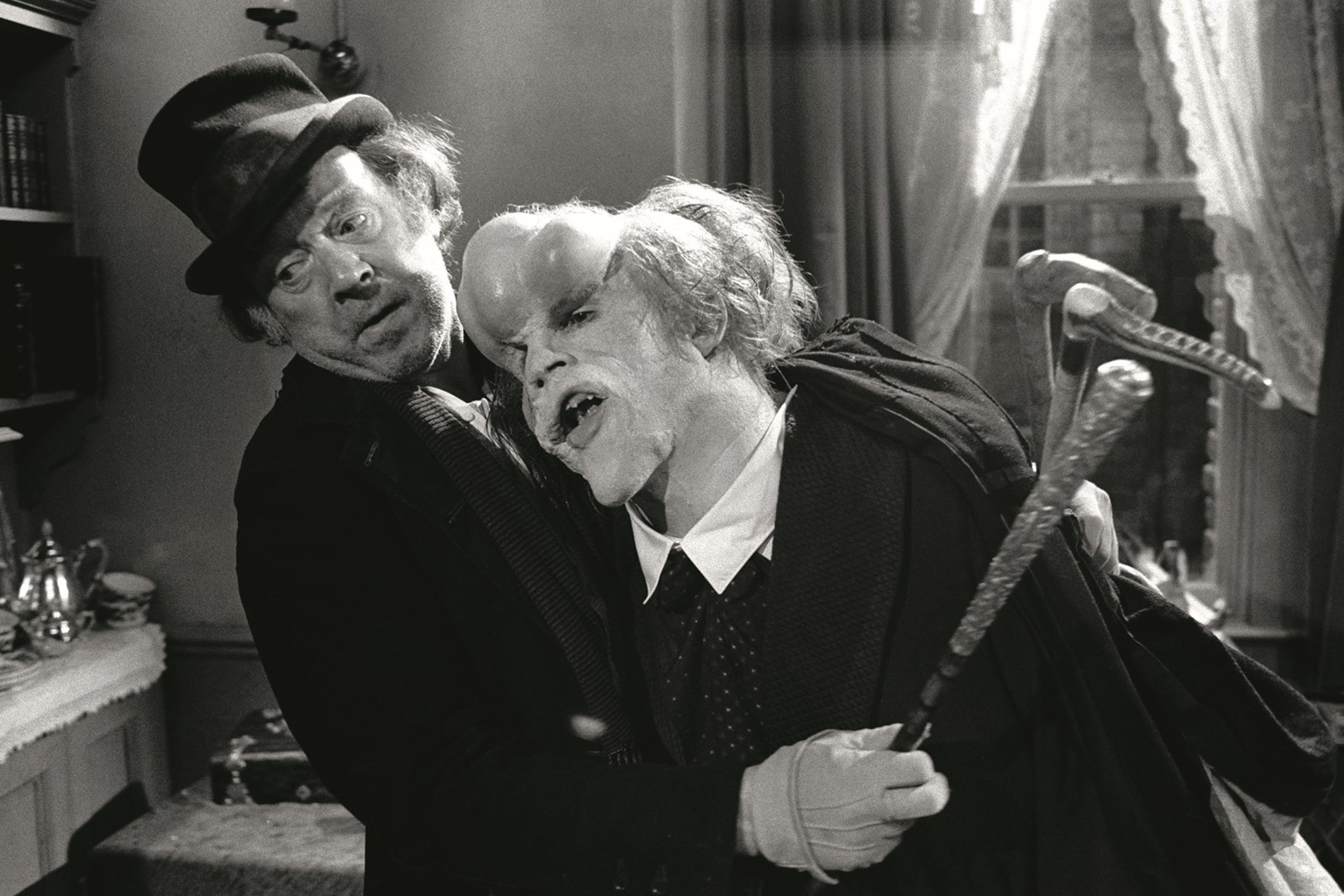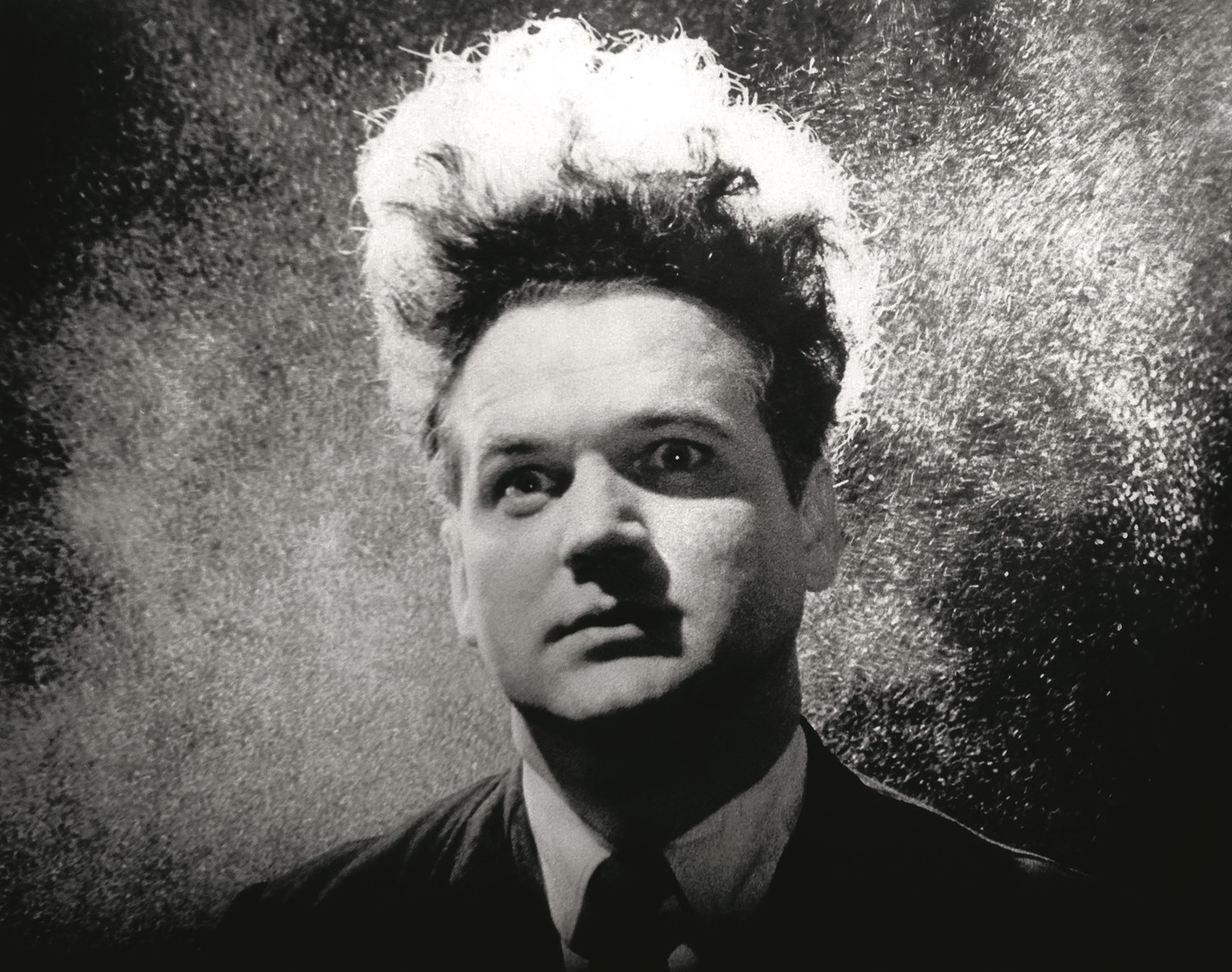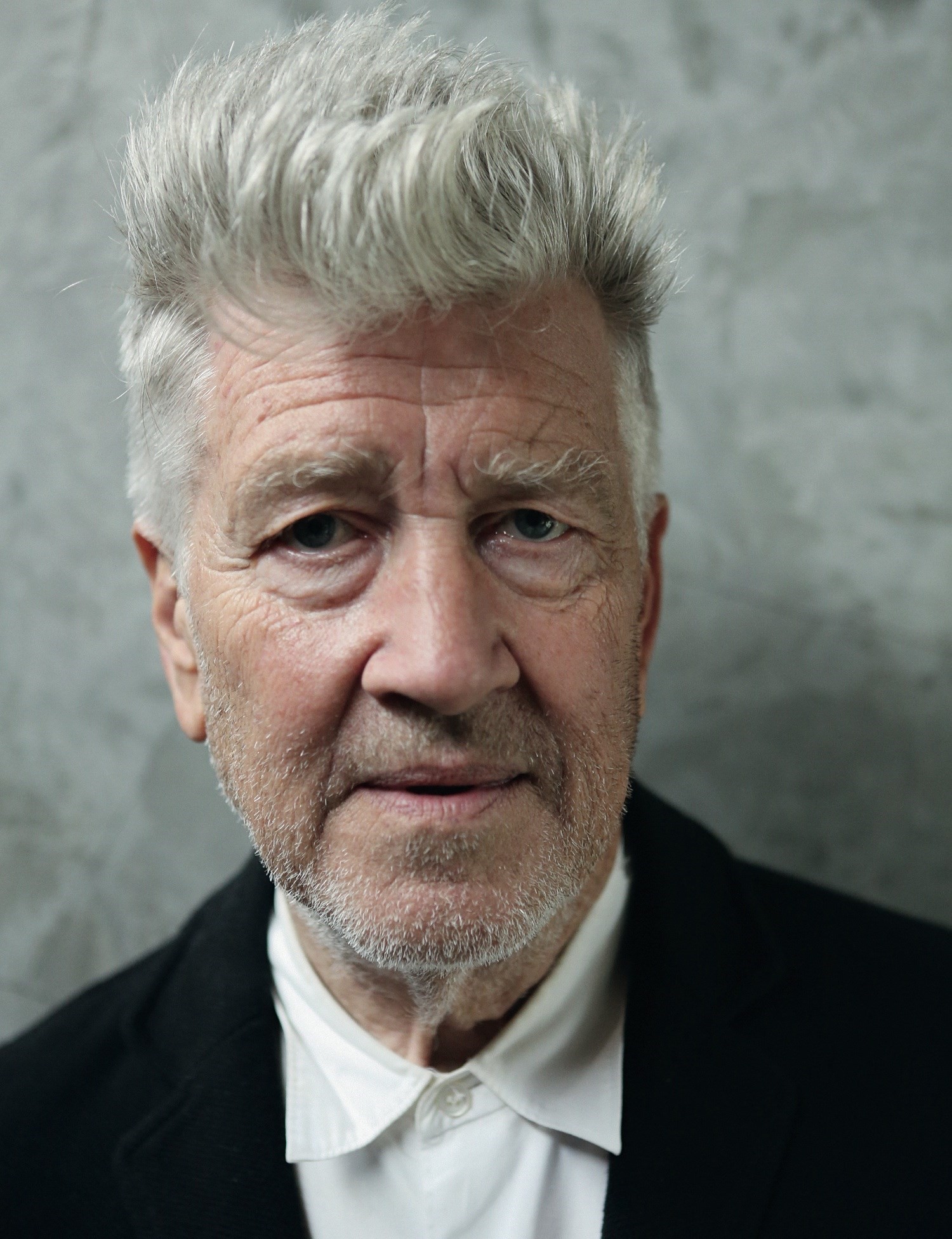This article is taken from the Autumn/Winter 2014 issue of AnOther Magazine:
The films of David Lynch have been incredibly influential on me, ever since my adolescence. He’s one of the most influential artists of our time. We first made contact seven years ago, thanks to the Icelandic producer Joni Sighvatsson, who produced Twin Peaks. I made a visit to David’s studio in Los Angeles and was very impressed by the parallel realities there. There is a music studio, a studio where he makes his films, another where he makes the drawings, the paintings – it’s all on one ground, on different platforms. Ours is an ongoing collaboration: he was one of the protagonists of my Do It exhibition and has made a series of photographs for Solaris Chronicles, an exhibition curated by myself, Liam Gillick and Philippe Parreno and produced by Maja Hoffmann and the LUMA Foundation at the Parc des Ateliers, a former rail yard, in Arles. The exhibition focuses on the buildings of Frank Gehry, who has designed a building for the Parc as part of a major new cultural complex initiated by Maja Hoffmann and the LUMA Foundation, and we developed a moving display for Gehry’s architectural models, choreographed by Parreno, Gillick and Tino Sehgal with Asad Raza. It was important to have cinema represented and David and Frank have been friends for a long time. They once had an idea for a collaboration in which Frank would make a film and David would build a house, inverting their roles. That project remains unrealised but for Solaris Chronicles, David went to Frank’s studio and made detailed photographs of the models. They hang at the entrance of the exhibition. During our conversation, we talked about the constellation of disciplines – from film, to art, music, and most recently fashion – that make up his Gesamtkunstwerk, or “total work”.

Hans Ulrich Obrist: I would like to begin at the beginning: How you came to art or how art came to you.
David Lynch: Well, my family moved to Alexandria, Virginia from Boise, Idaho when I was in the eighth grade. Pretty soon after that, one night, on the front lawn of my girlfriend’s house, I met a boy named Toby Keeler, who went to a private school. He told me his father was a painter. At first I thought he meant a house painter, but then he said, “No, fine art painter” and a bomb went off in my head. In that millisecond, I only wanted to be a painter. I went the next weekend to visit his father in his studio in Georgetown. My father told me he would pay half to rent a room in that studio, so I had a studio during high school and started painting.
HUO: Who were your influences at that time?
DL: Well, I liked Hopper, but I didn’t really know anything about painting, so I didn’t have any heroes, I think, until I saw Francis Bacon’s work in New York in 1966. But I like organic phenomena and the biggest influence I always say was the city of Philadelphia. I think I got my first original idea when I was 20 in Philadelphia. It was unique. It wasn’t New York. The style of the architecture was a bit different and it had incredible mood and incredible industrial buildings. It had a thick layer of fear; it was a corrupt city and a fearful city. I felt a lot of insanity. It is called the City of Brotherly Love, Philadelphia. But it was absolutely the reverse at the time. I say Eraserhead is my Philadelphia Story. I like smoke and fire and the sounds of the factories.
"I say Eraserhead is my Philadelphia Story. I like smoke and fire and the sounds of the factories" – David Lynch
HUO: Besides Philadelphia, you also often talk about how much fun it was growing up in the woods. Again, was that because of fear, and the fantastic things?
DL: My father was a research scientist for the Department of Agriculture. He loved the woods, and he loved trees. His favourite tree was the Ponderosa Pine. I was always in the woods until we moved to Virginia. He was in charge of the Boise Basin Experimental Forest. It was a forest where they would do experiments to learn more about erosion, insects, disease, more growth from a tree – many, many different things. And in the experimental station there were a lot of people working, and some would be in charge of bugs, so they would have many drawers filled with insects on little pins and all kinds of things. And then you would have the smell of the pines and the floor of the forest. Ah, it was a very clean, majestic forest and it was a big influence. All the details of a forest, you could get down into them. They’re really beautiful, organic phenomena.

HUO: In your work, there are all these parallel realities. There are the films, the photographs, the sound work, the paintings and drawings going on in parallel. Is that something that started at that time?
DL: You know, when you are working on a film, it’s really hard to also work on painting. But in between films, I would paint. And then film opened up still photography. But I started loving to take pictures of factories and nude women. Then I got into different, more varied themes, I guess, and then sculpture kind of came along a little bit, because always in the house we would have a wood shop and my father would just build something rather than buy something.
HUO: You mentioned Bacon as a revelation for painting. Was there a revelation for cinema?
DL: No, but I liked other people. I liked – when I discovered him – Edward Kienholz; he is one of my favourites now. Bacon and Kienholz have a lot in common.
HUO: So, it was more art than cinema that inspired you.
DL: Yes, and I didn’t really know anything about cinema. But, coming into it from painting, it just seemed like it was always kind of like a moving painting, I guess, with a story.
“I’m in a transition, Hans. I am painting, and I am painting over and then painting, and then painting over, and destroying, and painting, and destroying, and painting over” – David Lynch
HUO: Can you tell me about the paintings you are working on at the moment?
DL: I’m in a transition, Hans. I am painting, and I am painting over and then painting, and then painting over, and destroying, and painting, and destroying, and painting over. I am just trying to find the next thing, and the only way I think I can find it is to keep doing things and learning from it.
HUO: I have a feeling memory plays an important role in your work.
DL: Memory is really a magical thing. They say that memory in Vedic language is smriti. And in the transcendent, in the unified field, there is the memory of everything that has ever been, the memory of everything that is now, and the memory of everything that will ever be. That’s memory.
HUO: You talked about organic phenomena, and The Elephant Man starts incredibly with his birth, with this puff of smoke. It’s very organic.
DL: The smoke is the way the thing grew, like you said. But I saw a picture of the volcano Mt. St. Helens exploding and when you look at the smoke, it’s thick and it flows and roils a certain way. This is exactly the way the Elephant Man’s flesh looked. It was like a slowmotion explosion of flesh. Here’s the thing: just like in a painting, there are fast areas, and slow areas. These relationships are kind of critical, and how a thing flows is critical, but again, it’s not an intellectual thing. It’s an intuitive thing. You can’t really talk about it, but things have a way of wanting to be.

HUO: So, it sort of just happens?
DL: An idea comes. Scripts are organised ideas. When you read a script, it comes alive in your head. And that aliveness in the head is like seeing it and hearing it and knowing it. Or if an idea comes from outside, boom, you catch it in your brain and you see it and you hear it, and you know it. You sometimes fall in love with these things. All you do in cinema is translate those ideas. They talk to you, so you just stay true to the idea and translate it as good as you can.
HUO: Blue Velvet starts with slowness; there is a slow mood at the beginning of the film.
DL: To go into a world… there might be a way to slam in, but I like the idea of a sense of place and mood and how that gets set up. Since then there’s been this very fast cutting and another kind of style, but it doesn’t allow really getting into deep areas in my opinion.
HUO: When we last met, you told me that it had to do with Good Times on Our Street.
DL: Good Times on Our Street was a book. Dick and Jane and the dog, Spot. It was a world with white picket fences and gardens. I think it was probably written in the 1940s and it was used to teach reading in schools. But that certain kind of look from that book, I think, was a huge influence on me – and Blue Velvet.
“Every idea that you fall in love with is a gift. How the ideas come is the trick” – David Lynch
HUO: Chance seems to play a big role in your work. You call chance a great gift.
DL: A great gift; a happy accident: they’re blessings, in a way. Every idea that you fall in love with is a gift. How the ideas come is the trick. You can’t make them come, but something will trigger a thing, and then there it is. It’s amazing. Another story: at the time I was making Twin Peaks, I was fixated on the number nine (now I love the number seven). But I played this game I made up called License Plate Game, a ridiculous sort of game. If you see your initials on a car and the numbers add up to your favourite number, and the car is very good – that’s the highest you can get. An X is a wild card. If there is an X on the license plate you can make it any letter you want. It’s good if you see your initials, if they are out of order, even. But it’s not as good as if they are in order. And it’s good if they are in order, but the car isn’t so good. It’s a little bit less good. It’s good if you see your initials, but it’s a bad number. But if you see a 666, you cannot turn off your car engine until you see something – a 333, or something like that – that balances it out. OK? So Mark Frost and I are going to our first meeting at ABC Television for Twin Peaks. We’re driving down Robertson Boulevard towards Santa Monica and a car turns from off Santa Monica, coming right towards us. It’s a brand new, white Mercedes and the license plate says DKL999 and I said, “This is going to go very well.” And it did.
HUO: You said about making Wild at Heart that insanity was in the air, and it’s a love story of the insane kind. I was wondering how your antennae pick up the outside world, because very often these films come out of your own interior. But here there seems to be some connection.
DL: No, it’s always both. It’s in the air. You can feel it in the air. And even if you didn’t watch TV, even if you lived in the woods, you could still feel it. It might be real subtle, but input comes and you say, “Oh man, it’s really getting strange.” And it just is getting stranger all the time. It seems to come from within, but it’s triggered from outside. I’ll tell you one more story. I had an assistant named Gaye. It was my birthday, a Sunday and she came over to the house with two packages wrapped in red paper, presents for me. She put them down and started making coffee. Sometimes it takes a little while to make an espresso or a cappuccino. So I take a pencil and start drawing. We were talking a little bit from the kitchen, but then I stopped and she said, “What are you doing?” I said I was working on a drawing. She said, “What are you drawing?” I said, “I am drawing a locomotive. I’m drawing a Raymond Loewy locomotive.” Then it got real quiet and she came to the door and she said, “Open that present.” It was a book of Raymond Loewy’s designs with a train on the front.

HUO: I remember last time we looked at the painting studio and then the sound studio. You said you actually never have to leave the house! But you also talked about the speed of rooms, their speed and slowness, and I was wondering: Do other places, cities, also have speed?
DL: Oh, yes, yes, yes. When you fly into LA at night, it’s all lit up, miles and miles of lights – so beautiful. It’s a very fast image. But within it there are these places that talk about memory. You know, on a summer’s night, maybe more like a spring night, you could drive to certain places and if you smell that night-blooming jasmine, you can almost see Clark Gable or Gloria Swanson. The golden age of Hollywood is still living in some moods here, in the DNA of the city. There are different textures within LA, and I am sure that’s the way it is with every city. Graffiti is the worst thing to happen to cities. It absolutely is the worst kind of disease that comes to a city. It just completely destroys the mood of a building, of what it could hold. It’s just a horror, an absolute horror.
HUO: A parallel to your feature films is the ads you directed.
DL: Sure, that’s for money and also to use the latest technology. I always say I learned so much from doing ads.
HUO: Fellini often talked about his Barilla ad.
DL: He did a Barilla? I did a Barilla pasta ad. We were shooting in a beautiful place in Rome, in a piazza. I was working with Tonino Delli Colli, who shot Intervista with Fellini. I had actually met Fellini when he was shooting Intervista, spent the whole day with him. That was one of my greatest days. But we were shooting in this piazza and I’m with Tonino and another guy who had worked with Fellini. We were talking – we were always talking about Fellini – and they said, “David, we just found out that Fellini’s in a hospital in northern Italy, and they are moving him down to Rome today or tomorrow.” And I said, “Whoa… do you think it would be possible for me to go say hello?” They said, “We’ll try, sure it would be possible.” So, Fellini came down to this hospital, and at 6pm on Friday, beautifully sunny and warm, we get there and his cousin says, “Only you and Tonino can go in, because he is not strong.” So, we go deep into the hospital. Fellini is in a room, in a wheelchair. I sit with him and he holds my hand for a half hour and we talk. Gérard Depardieu was in the commercial and so he took us back to Paris after that in his private plane. Sunday afternoon, I turn on the TV: Fellini is in a coma. Two weeks later, he died.
“I always give credit to Angelo Badalamenti for bringing me into the world of music” – David Lynch
HUO: What did he tell you? Do you remember?
DL: We talked about the old days for him. What he used to love was coming down in the morning to read the paper and take coffee in this café, and cinema students would all come around. They would have these talks over breakfast. He loved it; he said the kids were so high on cinema and they were so smart and would get into all kinds of discussions. He loved that. But then he said, “David, it’s all gone. They are watching TV. They don’t care about cinema. They are playing games.” In other words, he would just go down there and he would be alone. No one cared.
HUO: Another parallel reality is your music.
DL: I always loved music, but usually just for cinema. I always give credit to Angelo Badalamenti for bringing me into the world of music. Then I started making sound effects with a guitar and that led to my own way of playing the guitar and it led to making music. I worked with “Big” Dean Hurley in the room there and we made this album, Crazy Clown Time.

HUO: What are you working on now?
DL: Big Dean and I are working on a new album. I say, “I’m a non-musician, making music.” For me, it’s a world of experimentation. I have a studio that was built for the sole purpose of experimenting with sound and music. Again, it’s finding your way; trying to find some fantastic little chunk of gold, and build on that. It’s the same way in painting. All these media are very compelling, like a giant, happy magnet, pulling us in.
HUO: You have also done amazing work for Arles. Can you tell me about the genesis of this work?
DL: I heard through the grapevine that you wanted me to do something. I had been out to visit Frank many times in his studio and seen this giant room filled with all these models and I thought they would make great abstractions if they were shot close. I talked to Frank, he said, “go for it”, so I spent the afternoon photographing his models in his shop.
"Be true to yourself. Find your own voice and be true to that voice. Never take a bad idea, but never turn down a good idea. And, of course, have final cut" – David Lynch
HUO: Can you tell us about how you connect?
DL: A friend of mine once had an idea that Frank would make a film, and I would make a small building, and a documentary would be made of that. But that never came to be. Then my friends in Łódź, Poland talked to Frank about designing a beautiful building there. He designed an incredible building for that city, but meanwhile the politicians there got strange, so it hasn’t happened yet. I believe Frank’s mother’s family is from there; it’s a city we both really love. I can see the connection with music in Frank’s work, because his buildings are very musical. I think that everybody gets inspiration from all these different media, and you can be involved with many media these days. There’s much more freedom for us all these days. I have just fallen in love with a whole bunch of media, and I guess it’s true for Frank.
HUO: What would be your advice to a young filmmaker?
DL: I always say the same thing. Be true to yourself. Find your own voice and be true to that voice. Never take a bad idea, but never turn down a good idea. And, of course, have final cut. And be true to the ideas.
HUO: Have you any unrealised projects or dreams for 2014?
DL: I dream to keep on getting ideas and working.
This article was originally published in AnOther Magazine A/W14.
